almost 4 years
ago -
Jonno
-
Direct link
Hey everyone,
Welcome to Dev Brief #133!
This week we've got a big one featuring a Steam Free Weekend and sale, new Stalingrad information and screenshots, plus an update on Sainte-Marie-Du-Mont and a look at the Soviet Rifle arsenal that you'll be wielding from July 27th!
Before we dive in though we just want to say a huge WELCOME to all the new players joining us from both the free weekend and the sale - we hope you have an awesome time! We're humbled to have an amazing community here, so don't be shy, say hi when you jump into a unit and make some frontline friends.
Now let's get stuck in shall we...
WELCOME TO HELL LET LOOSE!
Free Weekend
That’s right, HLL is free to play this weekend!
Welcome to all our new players. We will be available for you to enjoy Hell Let Loose for free from 6pm BST today until 6pm BST Monday.
We highly recommend joining the community on our OFFICIAL DISCORD[discord.gg] where you can stay up to date with all things HLL, and get support from the community as a new player!
We also recommend taking a quick scroll through our announcements & Developer Briefings. Here you will see we are committed to our development through weekly ongoing communication. You can also see what content we have planned for our next update.
Check them out here!
Steam Summer Sale
In addition to the free weekend Hell Let Loose is -25% Off during the Steam Summer Sale.
Please note: This will be the final opportunity to get HLL at a discounted price before we leave Early Access!
https://store.steampowered.com/app/686810/Hell_Let_Loose/
ICYMI - A message from our Lead Developer Max, on Leaving Early Access
Hi everybody,
We’re excited to announce that we’ll be leaving Early Access with the launch of Update 10 in the coming weeks and the introduction of the Soviet forces. For us, it represents the solidification of several foundational elements for the game. We know that there will be many questions around us leaving Early Access and what that might mean for the future of the title.
Don’t worry - as you’ll discover below this represents the completion of some key infrastructure beneath the hood - including finalising workflows that will enable us to work far more efficiently in the future. You’ll also see that we’ve got huge things planned for the game that we’ll talk through below.
Our Goals During Early Access
Hell Let Loose is an epic journey for both the whole development team and community.
Beginning in 2015 as a hobby, we’ve both expanded and learned so much during the development of Hell Let Loose.
When launching into Early Access, we had several key goals to accomplish during the period:
We knew that there were several fundamental infrastructure overhauls that we’d need to achieve during the period in order to make sure we were best set up to support the title well beyond our Early Access period. Our animation system required more than 50 handmade animations per item, our texturing systems meant both our vehicles and weapons were so expensive on VRAM usage that they needed to be crushed in quality, and there was a total absence of ballistics in-game - to name just a few significant absences or issues.
On top of this, we also wanted to build out the core offering of maps, roles and vehicles - and expand and polish Commander abilities.
Lastly, we also wanted to expand the size of the studio and bring on new team members who could join us in refining and building Hell Let Loose long term.
For us, Update 10 represents the success of these initial goals and our leaving Early Access. All underlying infrastructure in the game has been rewritten for much easier iteration, expansion and optimisation and were used to help us introduce the all-new Soviet forces to the game.
............
You can read the rest of Max’s message here, explaining our decision to leave Early Access and how the future is shaping up HERE!
Update 10 Maps!
We have already shown off a bit of Kursk, one of our new maps coming along with the Soviet’s in Update 10. Now we take a quick look at Stalingrad.
Stalingrad
The Battle of Stalingrad was a nearly 6-month long engagement on the Eastern Front. German high command had pushed toward the River Volga in a bid to capture the strategic city, but found their progress slowed significantly once inside. One of the bloodiest battles of the war, Stalingrad alone accounted for more than a million combined casualties on both sides.
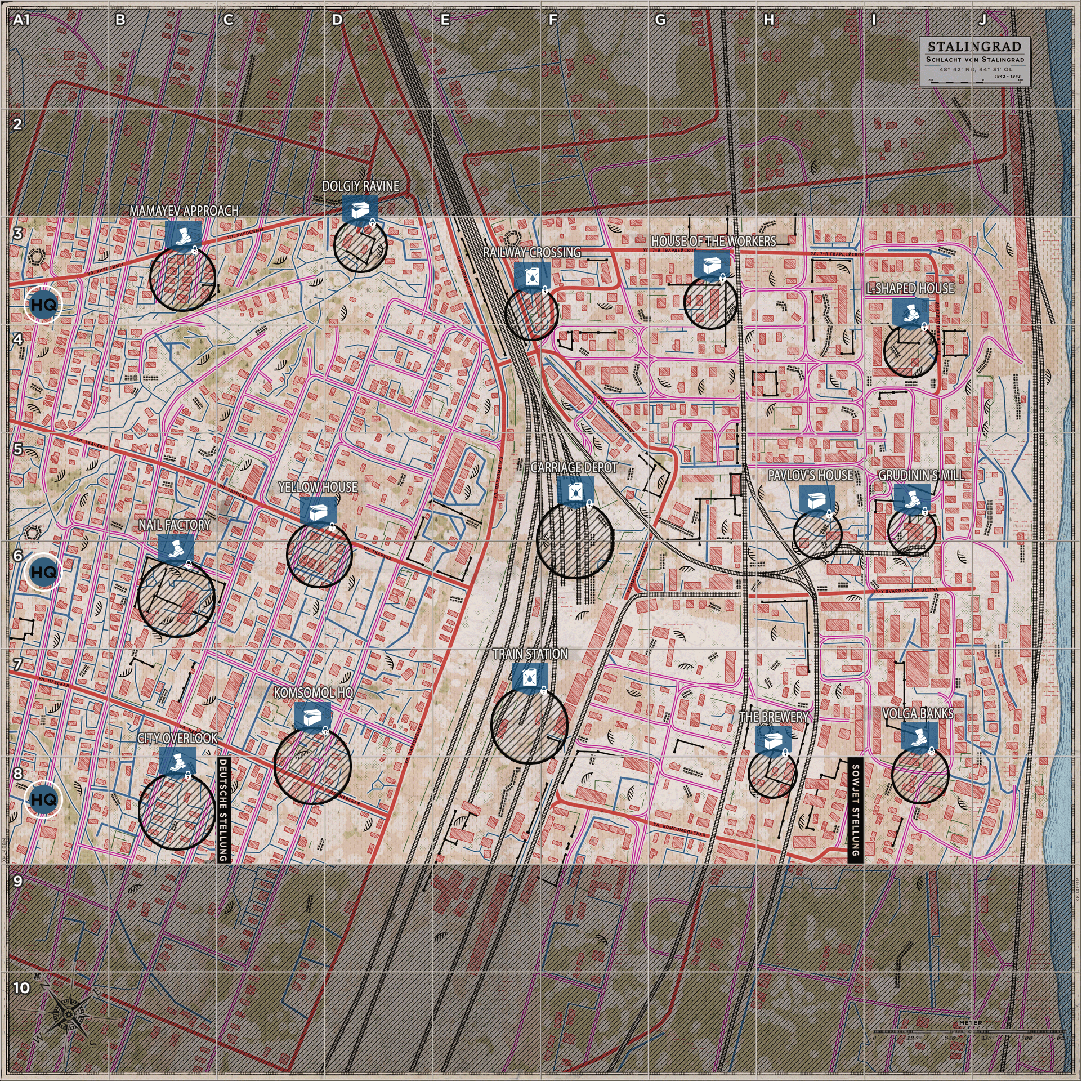
As combat progressed from the suburbs into the industrial sectors, with constant Luftwaffe bombing turning many buildings to rubble. Unfortunately for the Germans, these bombed out ruins were a perfect hiding place for ambushers and required savage room-to-room fighting to clear out. Soviet strategy was to fight the Germans as close in as possible, so as to limit their ability to use artillery or air support.
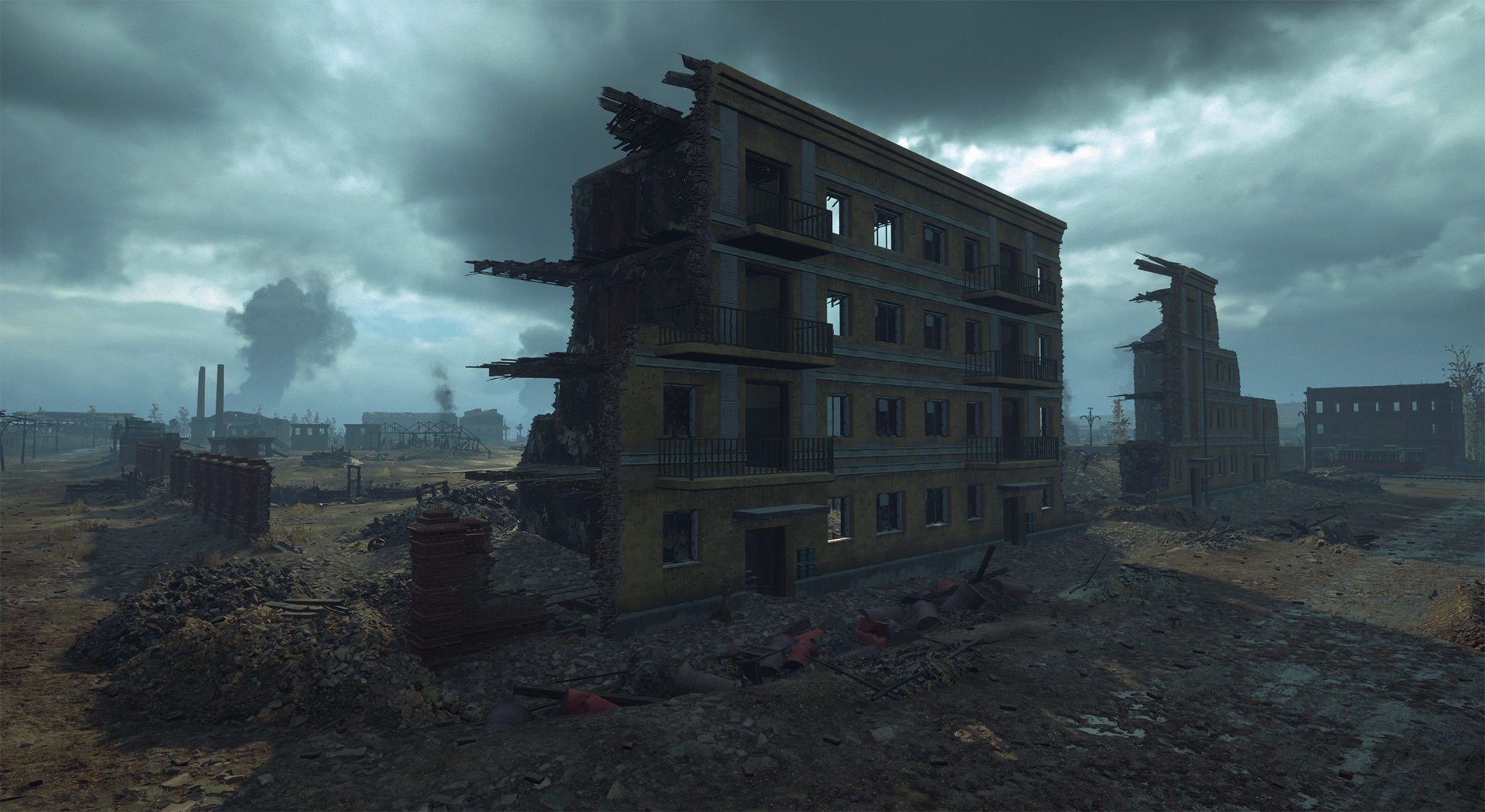
Some larger buildings which managed to survive the constant shelling would be built up as fortresses by the men who occupied them. One such building, known affectionately as Pavlov's House, became famous for outlasting a two-month siege while protecting the Russian-held Volga behind.
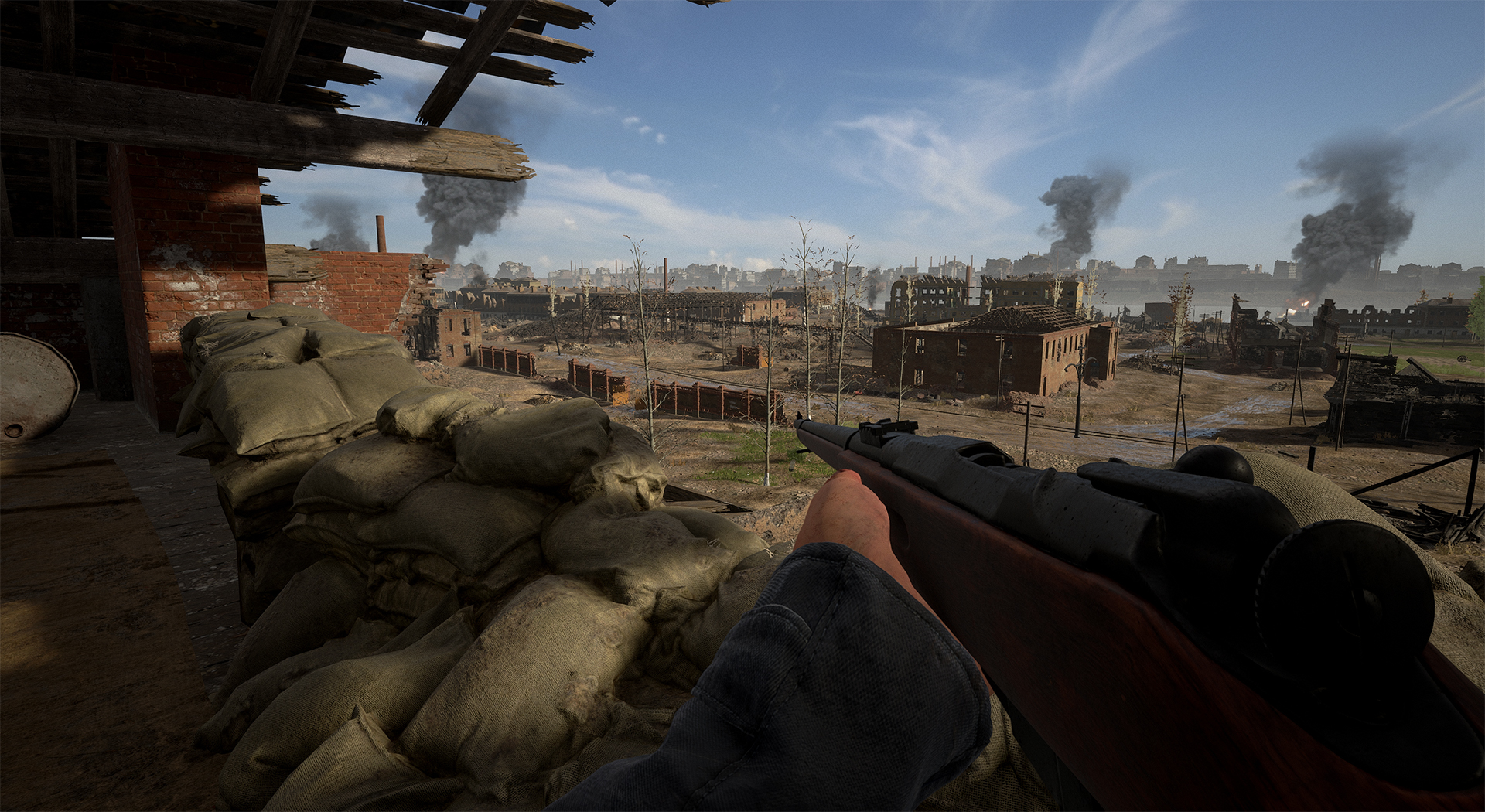
Ultimately, the success of the Soviet operations in the winter of 1942 would cut the German supply lines and leave their army surrounded in Stalingrad. The Germans continued to hold their portion of the city and attempted to break out toward friendly lines for another few months, but would eventually collapse and surrender from lack of supply in 1943.
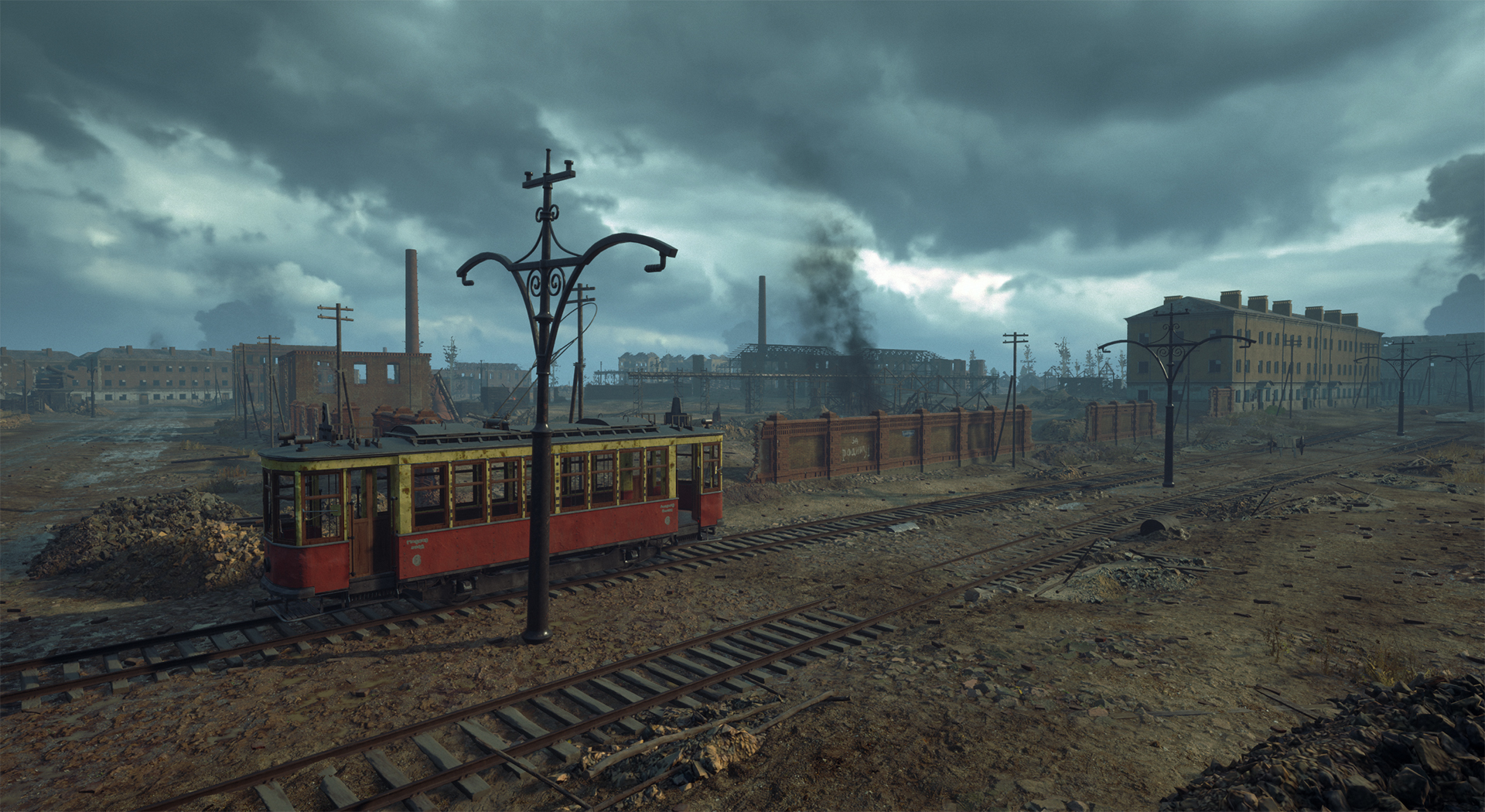
Stalingrad is a very unique map amongst the existing Hell Let Loose rotation. While urban, the nature of the way the city was built allowed for long, wide roads and larger, spread-out buildings. The result is a mixture of key vertical locations (atop apartment buildings or smaller brick office blocks), open fields of fire across roads and destroyed city blocks, and dense room to room fighting in the factories and workshops. Vehicles are extremely potent due to long sight lines, while infantry have the ability to manoeuvre amongst the rubble.
Back to Sainte-Marie-Du-Mont
We have already talked about the SMDM overhaul in Dev Brief #131, but we thought it was worth mentioning again as we know the community loves this map.
Additionally one of our community members, Sam_15_SVK, has made some comparisons to the old vs new SMDM. We thought it was fantastic and worth sharing.
You can check them out HERE![docs.google.com]
SMDM - A Brief History
The area around the village of Sainte-Marie-Du-Mont, in the Normandy region of France, was the site of many frantic skirmishes on the morning of June 6, 1944. Soldiers of the American 101st Airborne were assigned to secure the routes inland from the beaches, and eliminate any artillery batteries which could threaten the coming amphibious landing. Loading into C-47 transport planes, the men would parachute in zones radar-designated by Pathfinder teams sent in advance of the main wave.
The paratroopers and their transport crew had trained ceaselessly for the operation. Yet, as the planes flew over the mainland, trouble began to arise for the men of the 101st. Flak fire from the anti-aircraft batteries tore the sky asunder. Heavy could cover and the darkness of night obscured the landing zones, and the radar transponders malfunctioned. Many flights were blown off course, and many more had to drop their cargo blind into the darkness below. c*ckpits shaking from Flak fire, the pilots could only pray that the paratroopers made it to the ground safely.
Fortunately, most of the 101st were unharmed in the landings. Often scattered and out of position, they would have to wander in the darkness as they worked to regroup their forces and begin to accomplish their assigned tasks. A workable number of soldiers had been assembled by dawn, and at around 8:30 A.M. First Lieutenant Richard D. “Dick” Winters, took a dozen men to destroy the artillery battery at Brecourt Manor.
Despite being heavily outnumbered, the battery was destroyed without incident. Similar operations in the area assisted the soldiers landing at Utah beach, who had made significant headway inland. Armor arriving from Utah would finally swing the battle for Saint-Marie-Du-Mont in favor of the 101st, and the village would be taken by the end of the day.
The Soviet Arsenal
Mosin
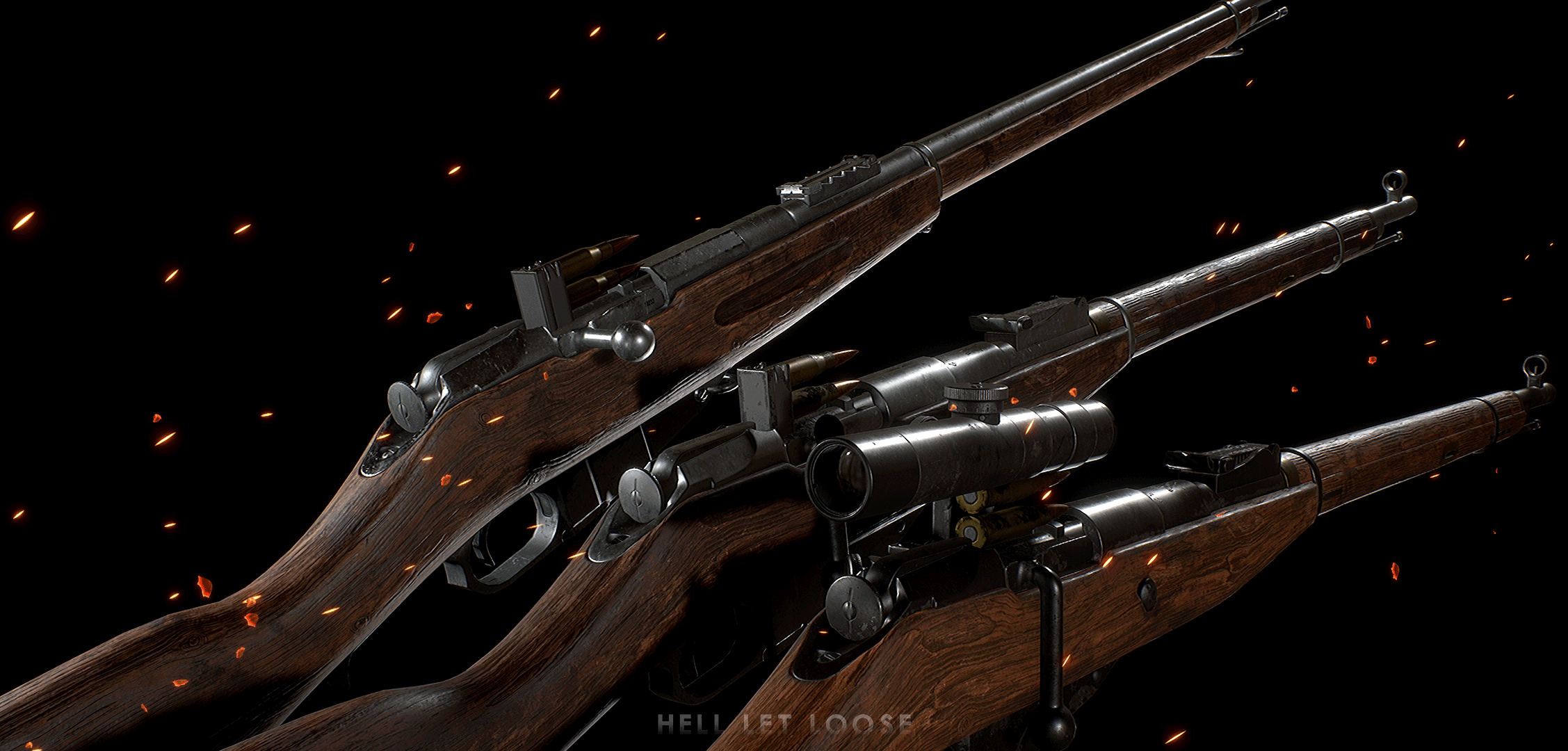
The Mosin rifle was the main arm of the Soviet Union in the Second World War. A bolt action rifle feeding from a 5 round single stack magazine, it fired the powerful 7.62 by 54 millimeter rimmed cartridge.
The rifle was designed by a commission of Russian arsenal designers, with principal work being contributed by Sergei Mosin. The design for the magazine came from a competing rifle submitted by Leon Nagant, and featured an interruptor to allow the reliable feeding of rimmed ammunition.
The Mosin would prove to be durable enough for combat on the eastern front of both World Wars, though the operating surfaces of the bolt were vulnerable to mud. While not exactly cheap to manufacture, the Soviet Union could field tens of millions numbers of the rifle due to their build-up of tooling machinery.
M91
The original mass-produced variant of the Mosin which served primarily in the First World War, the M91 was the longest of all the Mosins. Its rear sight was rushed into production following a change to spitzer ammunition in the early 1900s, and was somewhat vulnerable to damage.
M91/30
The Mosin rifle was updated in form factor in the years preceding the Second World War. The handier 1891 dragoon model was chosen as the basis of the 91/30, being a couple inches shorter than the original infantry model. The rear sight was also improved, and other than a few minor changes the rest of the rifle remained the same.
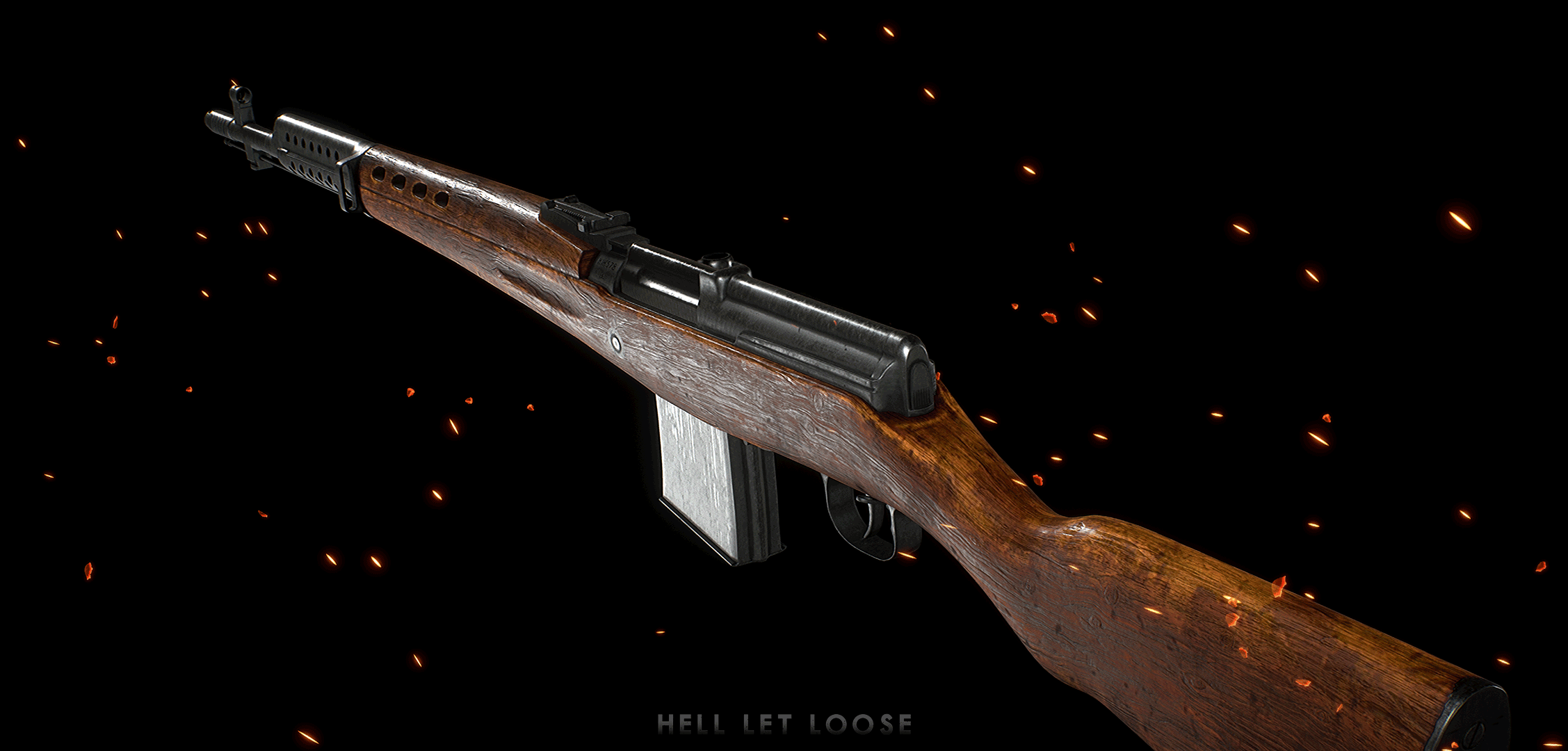
M38
An even shorter version of the Mosin, the M38 Carbine was used by engineers, artillery crews, and other troops whose primary duties did not involve frontline combat. Lighter in weight but firing the same ammunition as its full-size brethren, the M38's recoil was correspondingly higher.
M91/30 Sniper
The scoped variant of the M91/30, the sniper variant, had a scope mount on the side of the receiver which accepted either PEM or PU scopes. The bolt handle was bent 90 degrees to clear the scope. They were generally made with tighter tolerances, and were capable of higher precision compared to a standard 91/30. Discerning snipers could attempt to obtain ranging PZ ammunition, which would explode on impact with the target.
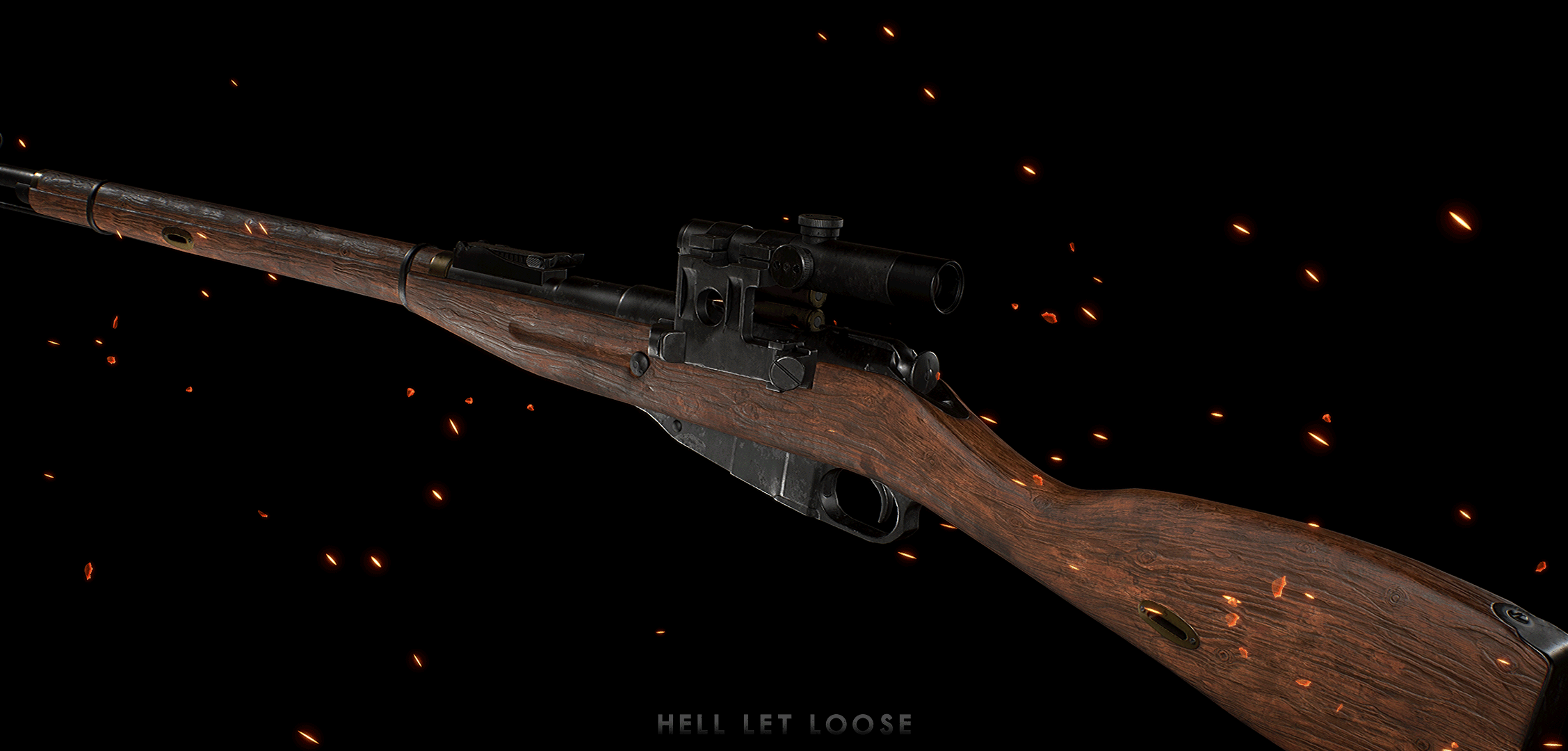
SVT-40
The SVT-40 was a Soviet semi-automatic rifle used extensively in World War 2. A short-stroke piston design, the SVT was one of the earliest self-loading rifles fielded in a significant quantity by a major army. It fed from a 10 round magazine and could be loaded with standard stripper clips.
Although reasonably rugged, it was necessarily more complex than traditional bolt-action rifles. Troops in the field complained that it was difficult to maintain and susceptible to mud.
The large mass of moving parts in the forend of the rifle and the poorly bedded barrel caused it to bounce when fired, negatively affecting accuracy. PU scopes were mounted to SVTs, though the bedding issue would stop production of these marksman's SVTs by mid-war.
The SVT was intended to be mass issued in large numbers. However the high casualties and equipment losses early in the war forced the rapid refitting of the Red Army, something the simpler Mosin was more suited to. The SVT would serve in a gradually diminishing capacity until production stopped in early 1945. The additional firepower provided was not seen to be worth the additional complexity at the time.
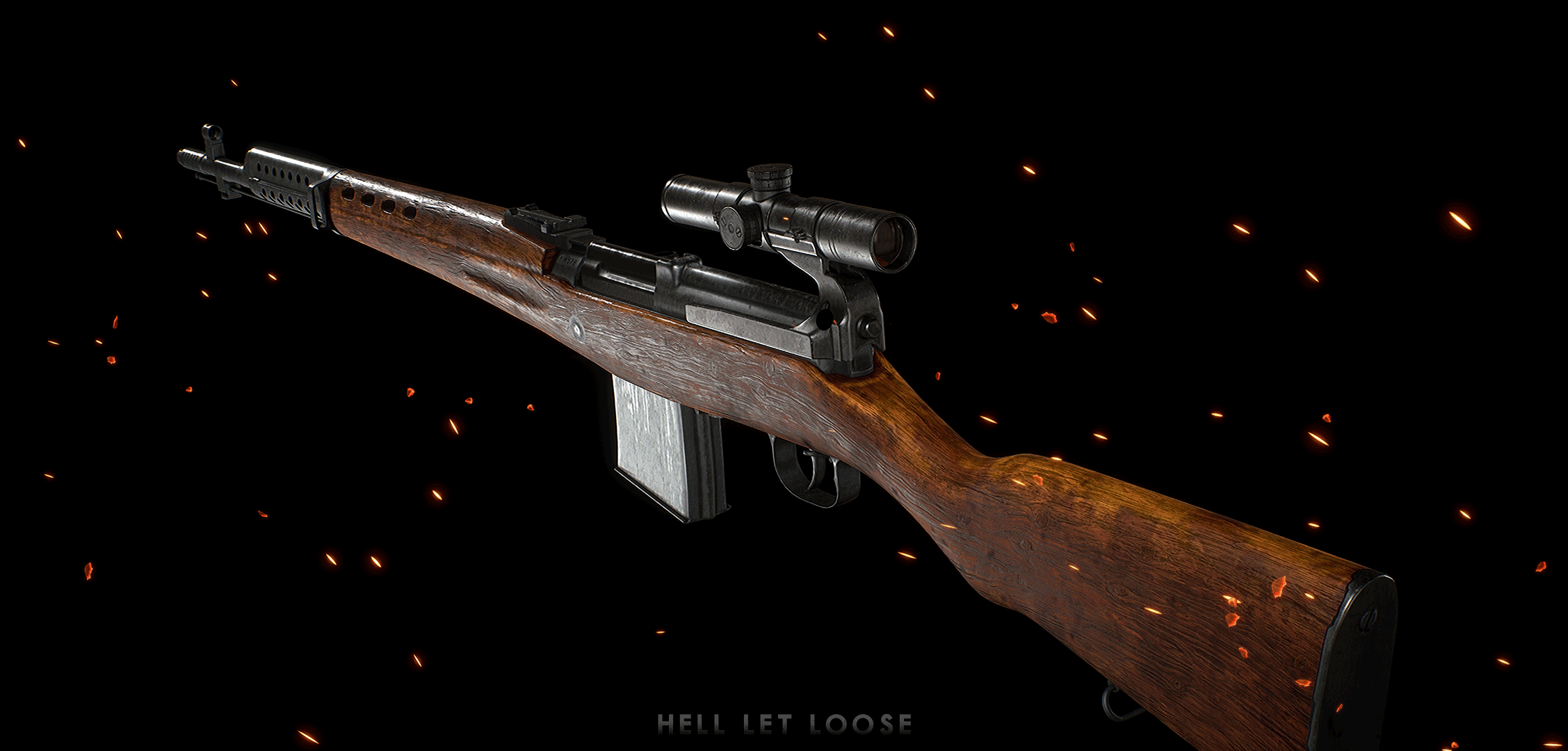
Onwards to the free weekend!
That wraps up this week's Dev Brief!
It's going to be a busy weekend on the battlefields of Hell Let Loose and we hope you all have an awesome one!
Once again welcome to all our new players and also thank you to our existing community for being so welcoming - you rock!
We'll see you on the frontline.
Welcome to Dev Brief #133!
This week we've got a big one featuring a Steam Free Weekend and sale, new Stalingrad information and screenshots, plus an update on Sainte-Marie-Du-Mont and a look at the Soviet Rifle arsenal that you'll be wielding from July 27th!
Before we dive in though we just want to say a huge WELCOME to all the new players joining us from both the free weekend and the sale - we hope you have an awesome time! We're humbled to have an amazing community here, so don't be shy, say hi when you jump into a unit and make some frontline friends.
Now let's get stuck in shall we...
WELCOME TO HELL LET LOOSE!
Free Weekend
That’s right, HLL is free to play this weekend!
Welcome to all our new players. We will be available for you to enjoy Hell Let Loose for free from 6pm BST today until 6pm BST Monday.
We highly recommend joining the community on our OFFICIAL DISCORD[discord.gg] where you can stay up to date with all things HLL, and get support from the community as a new player!
We also recommend taking a quick scroll through our announcements & Developer Briefings. Here you will see we are committed to our development through weekly ongoing communication. You can also see what content we have planned for our next update.
Check them out here!
Steam Summer Sale
In addition to the free weekend Hell Let Loose is -25% Off during the Steam Summer Sale.
Please note: This will be the final opportunity to get HLL at a discounted price before we leave Early Access!
https://store.steampowered.com/app/686810/Hell_Let_Loose/
ICYMI - A message from our Lead Developer Max, on Leaving Early Access
Hi everybody,
We’re excited to announce that we’ll be leaving Early Access with the launch of Update 10 in the coming weeks and the introduction of the Soviet forces. For us, it represents the solidification of several foundational elements for the game. We know that there will be many questions around us leaving Early Access and what that might mean for the future of the title.
Don’t worry - as you’ll discover below this represents the completion of some key infrastructure beneath the hood - including finalising workflows that will enable us to work far more efficiently in the future. You’ll also see that we’ve got huge things planned for the game that we’ll talk through below.
Our Goals During Early Access
Hell Let Loose is an epic journey for both the whole development team and community.
Beginning in 2015 as a hobby, we’ve both expanded and learned so much during the development of Hell Let Loose.
When launching into Early Access, we had several key goals to accomplish during the period:
We knew that there were several fundamental infrastructure overhauls that we’d need to achieve during the period in order to make sure we were best set up to support the title well beyond our Early Access period. Our animation system required more than 50 handmade animations per item, our texturing systems meant both our vehicles and weapons were so expensive on VRAM usage that they needed to be crushed in quality, and there was a total absence of ballistics in-game - to name just a few significant absences or issues.
On top of this, we also wanted to build out the core offering of maps, roles and vehicles - and expand and polish Commander abilities.
Lastly, we also wanted to expand the size of the studio and bring on new team members who could join us in refining and building Hell Let Loose long term.
For us, Update 10 represents the success of these initial goals and our leaving Early Access. All underlying infrastructure in the game has been rewritten for much easier iteration, expansion and optimisation and were used to help us introduce the all-new Soviet forces to the game.
............
You can read the rest of Max’s message here, explaining our decision to leave Early Access and how the future is shaping up HERE!
Update 10 Maps!
We have already shown off a bit of Kursk, one of our new maps coming along with the Soviet’s in Update 10. Now we take a quick look at Stalingrad.
Stalingrad
The Battle of Stalingrad was a nearly 6-month long engagement on the Eastern Front. German high command had pushed toward the River Volga in a bid to capture the strategic city, but found their progress slowed significantly once inside. One of the bloodiest battles of the war, Stalingrad alone accounted for more than a million combined casualties on both sides.

As combat progressed from the suburbs into the industrial sectors, with constant Luftwaffe bombing turning many buildings to rubble. Unfortunately for the Germans, these bombed out ruins were a perfect hiding place for ambushers and required savage room-to-room fighting to clear out. Soviet strategy was to fight the Germans as close in as possible, so as to limit their ability to use artillery or air support.

Some larger buildings which managed to survive the constant shelling would be built up as fortresses by the men who occupied them. One such building, known affectionately as Pavlov's House, became famous for outlasting a two-month siege while protecting the Russian-held Volga behind.

Ultimately, the success of the Soviet operations in the winter of 1942 would cut the German supply lines and leave their army surrounded in Stalingrad. The Germans continued to hold their portion of the city and attempted to break out toward friendly lines for another few months, but would eventually collapse and surrender from lack of supply in 1943.

Stalingrad is a very unique map amongst the existing Hell Let Loose rotation. While urban, the nature of the way the city was built allowed for long, wide roads and larger, spread-out buildings. The result is a mixture of key vertical locations (atop apartment buildings or smaller brick office blocks), open fields of fire across roads and destroyed city blocks, and dense room to room fighting in the factories and workshops. Vehicles are extremely potent due to long sight lines, while infantry have the ability to manoeuvre amongst the rubble.
Back to Sainte-Marie-Du-Mont
We have already talked about the SMDM overhaul in Dev Brief #131, but we thought it was worth mentioning again as we know the community loves this map.
Additionally one of our community members, Sam_15_SVK, has made some comparisons to the old vs new SMDM. We thought it was fantastic and worth sharing.
You can check them out HERE![docs.google.com]
SMDM - A Brief History
The area around the village of Sainte-Marie-Du-Mont, in the Normandy region of France, was the site of many frantic skirmishes on the morning of June 6, 1944. Soldiers of the American 101st Airborne were assigned to secure the routes inland from the beaches, and eliminate any artillery batteries which could threaten the coming amphibious landing. Loading into C-47 transport planes, the men would parachute in zones radar-designated by Pathfinder teams sent in advance of the main wave.
The paratroopers and their transport crew had trained ceaselessly for the operation. Yet, as the planes flew over the mainland, trouble began to arise for the men of the 101st. Flak fire from the anti-aircraft batteries tore the sky asunder. Heavy could cover and the darkness of night obscured the landing zones, and the radar transponders malfunctioned. Many flights were blown off course, and many more had to drop their cargo blind into the darkness below. c*ckpits shaking from Flak fire, the pilots could only pray that the paratroopers made it to the ground safely.
Fortunately, most of the 101st were unharmed in the landings. Often scattered and out of position, they would have to wander in the darkness as they worked to regroup their forces and begin to accomplish their assigned tasks. A workable number of soldiers had been assembled by dawn, and at around 8:30 A.M. First Lieutenant Richard D. “Dick” Winters, took a dozen men to destroy the artillery battery at Brecourt Manor.
Despite being heavily outnumbered, the battery was destroyed without incident. Similar operations in the area assisted the soldiers landing at Utah beach, who had made significant headway inland. Armor arriving from Utah would finally swing the battle for Saint-Marie-Du-Mont in favor of the 101st, and the village would be taken by the end of the day.
The Soviet Arsenal
Mosin

The Mosin rifle was the main arm of the Soviet Union in the Second World War. A bolt action rifle feeding from a 5 round single stack magazine, it fired the powerful 7.62 by 54 millimeter rimmed cartridge.
The rifle was designed by a commission of Russian arsenal designers, with principal work being contributed by Sergei Mosin. The design for the magazine came from a competing rifle submitted by Leon Nagant, and featured an interruptor to allow the reliable feeding of rimmed ammunition.
The Mosin would prove to be durable enough for combat on the eastern front of both World Wars, though the operating surfaces of the bolt were vulnerable to mud. While not exactly cheap to manufacture, the Soviet Union could field tens of millions numbers of the rifle due to their build-up of tooling machinery.
M91
The original mass-produced variant of the Mosin which served primarily in the First World War, the M91 was the longest of all the Mosins. Its rear sight was rushed into production following a change to spitzer ammunition in the early 1900s, and was somewhat vulnerable to damage.
M91/30
The Mosin rifle was updated in form factor in the years preceding the Second World War. The handier 1891 dragoon model was chosen as the basis of the 91/30, being a couple inches shorter than the original infantry model. The rear sight was also improved, and other than a few minor changes the rest of the rifle remained the same.

M38
An even shorter version of the Mosin, the M38 Carbine was used by engineers, artillery crews, and other troops whose primary duties did not involve frontline combat. Lighter in weight but firing the same ammunition as its full-size brethren, the M38's recoil was correspondingly higher.
M91/30 Sniper
The scoped variant of the M91/30, the sniper variant, had a scope mount on the side of the receiver which accepted either PEM or PU scopes. The bolt handle was bent 90 degrees to clear the scope. They were generally made with tighter tolerances, and were capable of higher precision compared to a standard 91/30. Discerning snipers could attempt to obtain ranging PZ ammunition, which would explode on impact with the target.

SVT-40
The SVT-40 was a Soviet semi-automatic rifle used extensively in World War 2. A short-stroke piston design, the SVT was one of the earliest self-loading rifles fielded in a significant quantity by a major army. It fed from a 10 round magazine and could be loaded with standard stripper clips.
Although reasonably rugged, it was necessarily more complex than traditional bolt-action rifles. Troops in the field complained that it was difficult to maintain and susceptible to mud.
The large mass of moving parts in the forend of the rifle and the poorly bedded barrel caused it to bounce when fired, negatively affecting accuracy. PU scopes were mounted to SVTs, though the bedding issue would stop production of these marksman's SVTs by mid-war.
The SVT was intended to be mass issued in large numbers. However the high casualties and equipment losses early in the war forced the rapid refitting of the Red Army, something the simpler Mosin was more suited to. The SVT would serve in a gradually diminishing capacity until production stopped in early 1945. The additional firepower provided was not seen to be worth the additional complexity at the time.

Onwards to the free weekend!
That wraps up this week's Dev Brief!
It's going to be a busy weekend on the battlefields of Hell Let Loose and we hope you all have an awesome one!
Once again welcome to all our new players and also thank you to our existing community for being so welcoming - you rock!
We'll see you on the frontline.